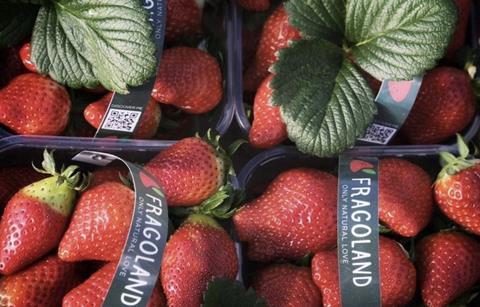The government is committed to transforming agriculture into a true engine of national economic growth and competitiveness
Albania is rapidly establishing itself as a significant contributor to Southeastern Europe’s fresh produce market. Fruits and vegetables represent about 36 per cent of the country’s agricultural exports — a figure expected to rise steadily, according to the World Bank’s 2022 report.

In an increasingly competitive regional context, Albania enjoys distinctive advantages. The Western Balkans are becoming a key early-season supplier for the European Union, driven by favorable climate conditions, competitive production costs, and investments in agri-technologies. Albania’s Mediterranean climate, combined with efficient maritime access through ports like Durrës and Vlorë, positions the country as a reliable and competitive supplier to EU markets.
Albania’s fresh produce exports reached approximately €150mn in 2023, a tenfold increase on 2013. Tomatoes, cucumbers, peppers, and mandarins dominate export portfolios, while preserved olives, essential oils, walnuts, and processed fish are gaining traction.
According to ITC TradeMap, Albania’s export potential remains untapped in several high-demand categories. Focused investments in infrastructure, certifications like GlobalGAP, and stronger links to European distribution networks could increase export revenues by as much as 40 per cent. The World Bank also highlights Albania’s strategic location, improving product quality, and low labour costs as major factors drawing interest from investors, particularly in value-added sectors such as processed foods and medicinal plants.
Compared to its Western Balkan neighbours, Albania offers a rare blend of strengths: over 280 sunny days a year favour early-season production, and a strategic focus on high-demand crops like tomatoes, mandarins, and figs aligns with European market trends. Competitive labour costs and direct maritime access to EU destinations further strengthen Albania’s positioning.
Nonetheless, challenges remain. The country lacks sufficient modern collection, packaging, and storage centres essential for export quality maintenance. Moreover, farm fragmentation and the low adoption of international certifications continue to limit Albania’s ability to scale production and meet stringent export standards.
While Albania has expanded greenhouse cultivation to over 2,500ha and increased its number of GlobalGAP-certified producers, broader modernisation is still needed. The establishment of nine new logistics centres is a positive step, but fragmented farm structures and underdeveloped value chains continue to impede sector efficiency.
Moving forward, a multi-faceted strategy is crucial. Priorities include modernising supply chain infrastructure, expanding international certification adoption, developing value-added processing capabilities, strengthening producer organisations, and leveraging EU funding programs like IPARD and IPA III to drive rural innovation.
The Albanian government’s ambitious goal to achieve US$1bn in agricultural exports by 2030 underlines its commitment to transforming agriculture into a true engine of national economic growth and competitiveness.
Strategically addressing supply chain gaps, enhancing compliance with international standards like GlobalGAP and investing in infrastructure and innovation will be crucial for Albania to meet – and potentially exceed – this goal. By focusing on diversifying products, expanding agri-processing capacities, and strengthening commercial partnerships, Albania can firmly establish itself as a leading player in the European fresh produce market and a model for agricultural success across Southeastern Europe.



